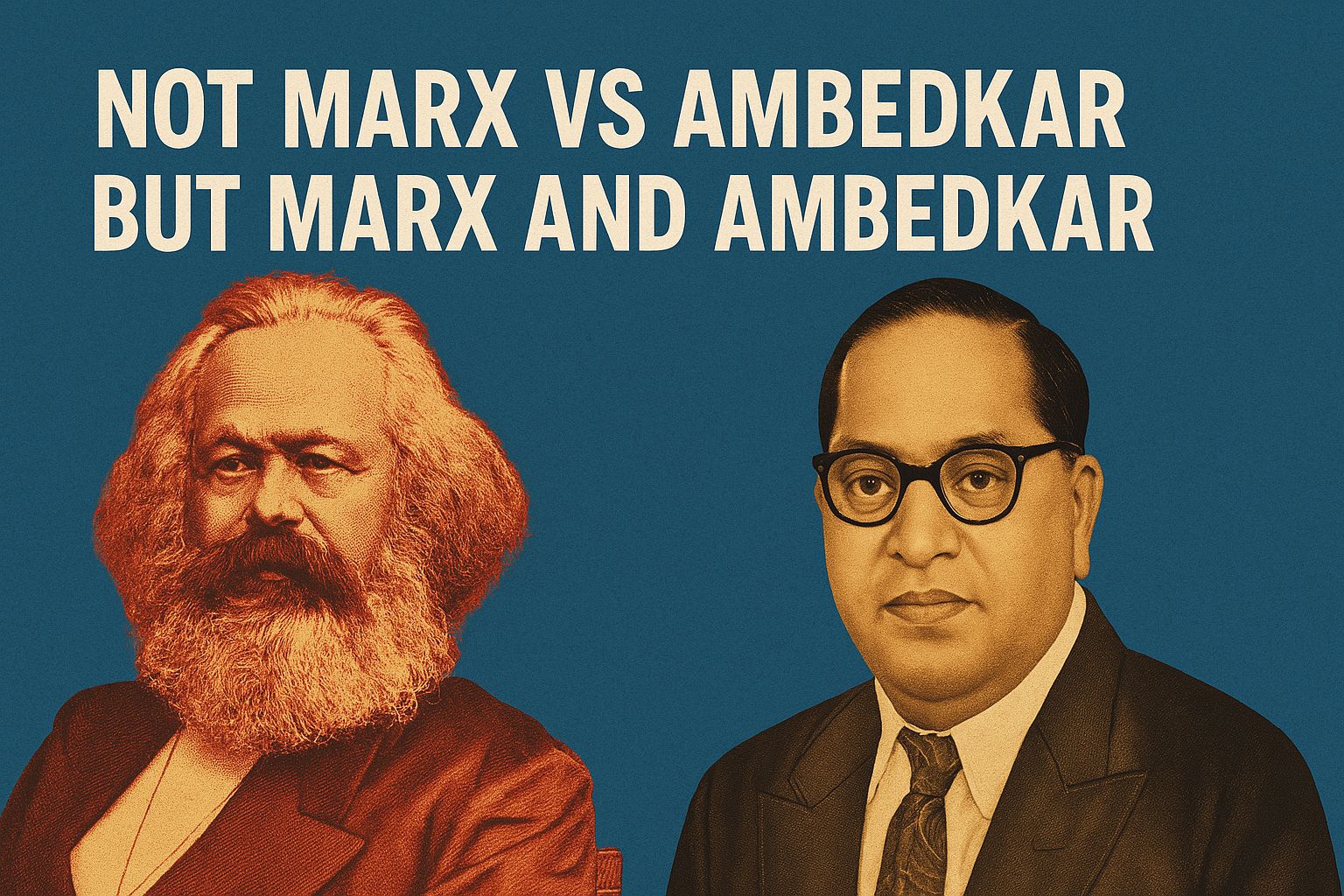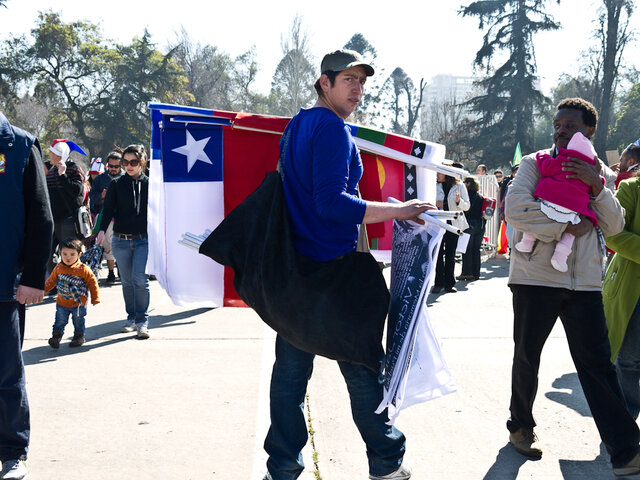
The debate between caste and class has long driven (and divided) progressive conversation in India. Typically, it begins with the goal of dismantling caste-based oppression, a vestige of pre-capitalist and Brahmanical hierarchies, but it frequently devolves into ugly polemics that disrupt the wider left movement. Notwithstanding this, it is both morally and politically imperative to categorically oppose the escalating caste atrocities perpetrated under the auspices of the Bharatiya Janata Party (BJP), whose ideological foundations in Hindutva have aimed to revive and institutionalise varna-based social hierarchies.
Distinct axis of oppression
In reality, caste-based discrimination is a distinct axis of oppression that often operates independently but is also profoundly linked with class, gender, and religious hierarchies; it is not a “secondary contradiction” or a derivative of class exploitation. Although, according to Marxism, the economic base determines social structures, even Karl Marx himself acknowledged the significance of history and non-economic factors in shaping consciousness. Embedded not only in institutions but also in daily social relations and ideas, his observation in The Eighteenth Brumaire of Louis Bonaparte, that “the tradition of all dead generations weighs like a nightmare on the brains of the living”—aptly encapsulates how the legacy of caste continues to haunt modern India.
In A Contribution to the Critique of Political Economy, Marx says, “It is not the consciousness of men that determines their being, but, on the contrary, their social being that determines their consciousness.” However, he also warned against reducing all history to economic determinism. In his Letters to Kugelmann, Marx explicitly stated, “world history would indeed be very easy to make, if the struggle were taken up only on condition of infallibly favourable chances.” This acknowledgement of historical contingency and superstructural complexity creates an opportunity to understand caste not merely as a pre-capitalist remnant but as a structure that capital can co-opt and reproduce.
In the Indian context, the Communist Party traditions, viz. CPI, CPI(M), CPI(ML) factions, etc. have at times attempted to integrate caste into class struggle. E.M.S. Namboodiripad recognised the significance of caste but argued that it would “wither away” as capitalism and feudalism declined. This view is consistent with the CPI’s traditional stance, which saw the caste issue as “only a part of the superstructure” and expected it to fade with capitalism. However, within capitalist modernity, this economic reduction led to a persistent oversight regarding how caste could endure—and even thrive. B R Ambedkar played a pivotal role in reframing the caste as a distinct power structure that resisted economic categorisation.
In Annihilation of Caste, Ambedkar famously argues, “caste is not merely a division of labour. It is a division of labourers… a hierarchy in which the division of labourers is graded one above the other.” (…) “This is not a functional differentiation; it is a moral order deeply internalized and reproduced across generations, sanctioned by religion and enforced by violence.”
This realisation highlights the psychological and cultural aspects of caste oppression— elements sometimes overlooked in conventional Marxist theories. Ambedkar’s view aligns with Gramsci’s idea of hegemony, where control is both coercive and ideologically and culturally consented to. Deeply ingrained in the Indian social order, the caste system runs exactly through such hegemonic processes—temple rites, scriptures, endogamy, and everyday language.
In The Hindu Social Order: Its Essential Features, Ambedkar notes, “The Hindu social order is nothing but a division of society into castes. It is a system which gives no scope for social mobility… It is a society that does not recognize the principle of equality, nor the necessity of liberty. This foundational inequality contradicts the very values that a just and emancipatory society must uphold.”
Caste, far from being a remnant of the past, continues to facilitate capitalist expansion. Often without job stability or legal protections, Dalit and Adivasi workers are methodically assigned to the most exploitative sectors of the economy: manual scavenging, sanitation work, bonded labour, and informal sector jobs. Such discrimination rather than incidental; it determines how caste and capital interact. As noted by political economist K. Raju, “The Indian capitalist class has made peace with caste, using it as a management tool for segmentation of labor and social control.”
This dynamic is reflected in Marx’s own analysis of how systems of domination evolve to suit capital’s needs. In Capital, Marx writes of the “mute compulsion of economic relations,” where exploitation need not be violent or overt—it is embedded in daily life, institutions, and inherited social norms. Caste, in this sense, functions as both a “superstructural” ideology and a concrete mechanism of economic exploitation.
Moreover, the Mandal-Mandir campaigns of the 1990s exposed the limits of both leftist class reductionism and secular liberalism. Whereas Mandal stood for a political reassertion of backward caste identity, the Mandir movement sought to unite upper-caste Hindus under a majoritarian banner. Trapped between these opposites, the Left neglected to respond with a strategy that might unite class struggle with the fight against caste oppression.
Marx-Ambedkar debate
Liberal NGOs and identity-based movements swept away the void left by the left’s theoretical and organisational retreat post-Mandal. Though important in elevating subaltern voices, these liberal interventions sometimes lacked a critique of capitalism and were easily co-opted by the state and donor agendas. Thus, a strong emancipatory politics in India has to combine the Marxist critique of capital with the Ambedkarite criticism of caste.
Still, this synthesis calls for a dramatic reevaluation of both traditions. The Maoist interaction with Ambedkar, for example, has been more instrumental than dialectical, though more flexible than the CPI/CPI(M). People invoke Ambedkar not as a thinker challenging the very core of Marxist orthodoxy, but as a tactical head. To “add” Ambedkar to Marx without changing the theoretical centre of the movement is to repeat the historical mistake of suborning caste for class.
One must develop an open Marxism that considers seriously the co-constitution of caste, class, gender, and religion. As Anupama Rao has shown in The Caste Question, “caste has a life beyond the economy even as it interacts with economic processes; it is a form of governance and an effective relationship.”
Ambedkar, too, pointed us in this direction when he said, “social democracy means a way of life which recognizes liberty, equality and fraternity as the principles of life.” (Constituent Assembly Debates, November 25, 1949)
These were not abstract ideals, but necessary ethical commitments to a politics that refuses to separate dignity from justice. Not only class struggle but social transformation anchored in dignity and recognition; the demand of the hour is not only redistribution but also reparations. As Ambedkar announced during the Mahad Satyagraha, “We are not going to the tank to merely sip its water. We are going to assert that we too are human beings.”
To further ground this dialectic in India’s material past, we have to look at the country’s foremost Marxist historian, D.D. Kosambi. His method focused on the interconnection between productive forces and social formations, but unlike most of the orthodox CP tradition, Kosambi also acknowledged the perdurability and resilience of caste through the centuries.
In An Introduction to the Study of Indian History (1956), Kosambi did not analyse caste as a form of religious or cultural deviance. Instead, he hypothesised that caste functioned as a device for appropriating agrarian surplus within the context of India’s historical development, serving as a mediating system that influenced access to land, labour, and political authority. In Kosambi’s view, caste was far from being a static relic of the past; it represented a historically conditioned social formation that evolved in response to changing material conditions. For Kosambi, “caste is a form of class in an early mode of production, a way of dealing with the issues of labor division. Once this division became fixed and hereditary, it served to stabilize and perpetuate inequality.”
Kosambi was not at ease with the superstructural comprehension of caste per se. His materialist framework stressed the need to grasp how caste was reproduced during Buddhist monastic hegemony, Brahmanical consolidation, the Delhi Sultanate, and British colonialism—not in opposition to these changes, but by adapting to them. This method of research has much in common with Ambedkar’s observation regarding caste as an ideological and institutional system of domination that is much more robust than conventional structures of class.
Further, Kosambi also recognised that colonial capitalism did not abolish the caste system but reconstituted it in many ways, utilising it to discipline and divide labour. This observation is in line with Ambedkar’s anxiety that colonialism perpetuates and institutionalised caste instead of eliminating it. British ethnographic surveys, census documents, and legal acknowledgement of caste identities were not mere dispassionate bureaucratic efforts—they solidified caste as an unchanging social order, helpful for domination and taxation.
Kosambi, too, was realistic about religion’s function in justifying caste injustice. According to him, “the history of religion in India is the history of class struggle in theological language.” This reading has a direct bearing on Ambedkar’s understanding of Hinduism not as a personal faith but as a graded inequality doctrine. Ambedkar’s call to “leave Hinduism” was not so much theological as political—a gesture of rupture with a civilisation’s order based on caste hierarchy.
While Ambedkar uncovered the normative violence of caste, Kosambi followed its material sources, showing how it benefited surplus extraction and class domination. That is the essence of a radical synthesis: caste as ideological and economic, moral and material, spiritual and structural. Their respective critiques prompt us to question the possibility of achieving socialism in a society where equality is not part of its cultural DNA.
Kosambi’s writing also indirectly cautions against the economistic reading of history that dominates Indian Marxist traditions. Although he was not an Ambedkarite, his receptivity to anthropology, archaeology, and philology rendered his approach unusually attuned to India’s particularity. Methodological eclecticism is required to construct what Gramsci would have called a “national-popular” counter-hegemonic project attuned to the experiential contradictions of Indian society.
Furthermore, Kosambi’s interpretation of history as an uninterrupted class struggle, infused with some Indian elements, cautions us against blindly adopting European categories. His appreciation for fieldwork and evidence, which distinguishes him from armchair Marxists, firmly bolsters his conclusions. Therefore, incorporating Kosambi into the Marx-Ambedkar debate brings material specificity and historical depth to it.
In our current context, this synthesis must address not just caste atrocities or capitalist exploitation in isolation but their co-constitutive logic. With the Indian state under Hindutva trying to re-brahmanise public institutions, corporatise the economy, and communalise the polity, a combined Marxist-Ambedkarite framework becomes not just desirable but necessary.
Such a project would not only fight for economic redistribution but also cultural transformation, social dignity, and epistemic justice. It would see the end of caste and exploitation as equally important goals. Kosambi’s materialism, Ambedkar’s moral radicalism, and Marx’s critique of capital form the framework of a new revolutionary horizon together.
As Ambedkar expressed in Annihilation of Caste, “you cannot construct anything on the basis of caste. You cannot construct a nation. You cannot construct a morality”. In the final pages of An Introduction to the Study of Indian History, Kosambi cautioned that “history cannot be written without taking sides.” In our era, to side with someone implies not to create a binary between Marx or Ambedkar, but to advance with both—towards a future in which equality is not just economic but existential.
Any revolutionary politics today starts from this idea: dignity is not an afterthought for economic justice but rather its primary condition. A truly radical left must centre Ambedkar’s ethic of social transformation in its endeavour. This implies facing caste as a constitutive logic of the Indian state and society rather than as a sign of underdevelopment. The challenge, therefore, is not to choose between Ambedkar and Marx but to enact a dialectical relation between them, one that does not reduce difference but engages it in the service of emancipation.
Any serious attempt to annihilate the caste system must seek to go beyond the confines of bourgeois parliamentarism. As Vivek Chibber rightly notes, “any Dalit movement, if it is actually going to address the needs of Dalits as a group, has to see itself as part of a class-wide movement.”.




1 thought on “CASTE AND THE DILEMMAS OF INDIAN LEFT”